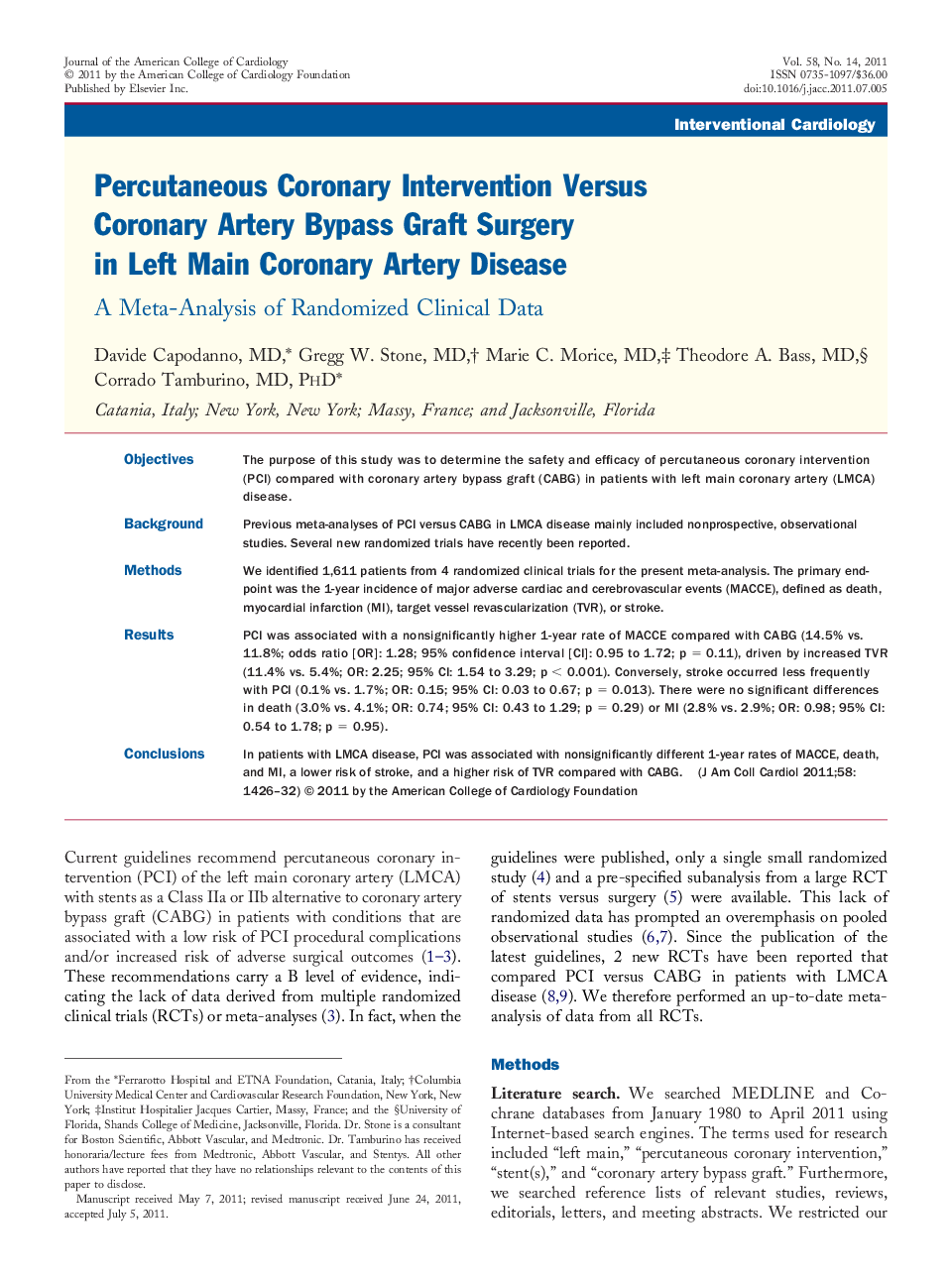| Article ID | Journal | Published Year | Pages | File Type |
|---|---|---|---|---|
| 2947891 | Journal of the American College of Cardiology | 2011 | 7 Pages |
ObjectivesThe purpose of this study was to determine the safety and efficacy of percutaneous coronary intervention (PCI) compared with coronary artery bypass graft (CABG) in patients with left main coronary artery (LMCA) disease.BackgroundPrevious meta-analyses of PCI versus CABG in LMCA disease mainly included nonprospective, observational studies. Several new randomized trials have recently been reported.MethodsWe identified 1,611 patients from 4 randomized clinical trials for the present meta-analysis. The primary endpoint was the 1-year incidence of major adverse cardiac and cerebrovascular events (MACCE), defined as death, myocardial infarction (MI), target vessel revascularization (TVR), or stroke.ResultsPCI was associated with a nonsignificantly higher 1-year rate of MACCE compared with CABG (14.5% vs. 11.8%; odds ratio [OR]: 1.28; 95% confidence interval [CI]: 0.95 to 1.72; p = 0.11), driven by increased TVR (11.4% vs. 5.4%; OR: 2.25; 95% CI: 1.54 to 3.29; p < 0.001). Conversely, stroke occurred less frequently with PCI (0.1% vs. 1.7%; OR: 0.15; 95% CI: 0.03 to 0.67; p = 0.013). There were no significant differences in death (3.0% vs. 4.1%; OR: 0.74; 95% CI: 0.43 to 1.29; p = 0.29) or MI (2.8% vs. 2.9%; OR: 0.98; 95% CI: 0.54 to 1.78; p = 0.95).ConclusionsIn patients with LMCA disease, PCI was associated with nonsignificantly different 1-year rates of MACCE, death, and MI, a lower risk of stroke, and a higher risk of TVR compared with CABG.
